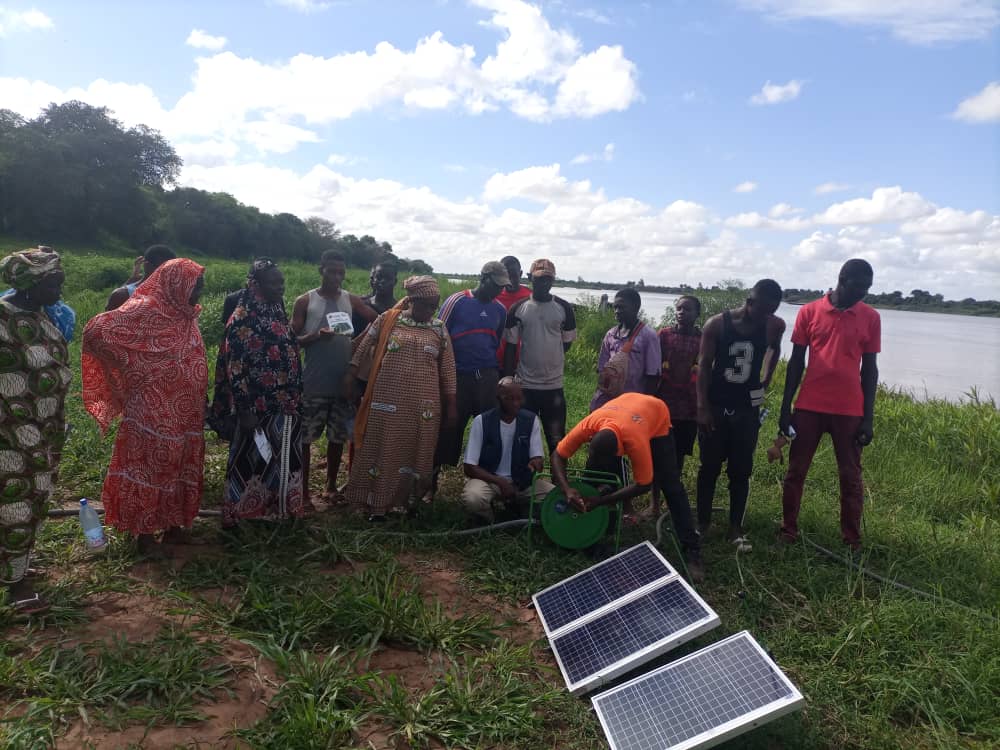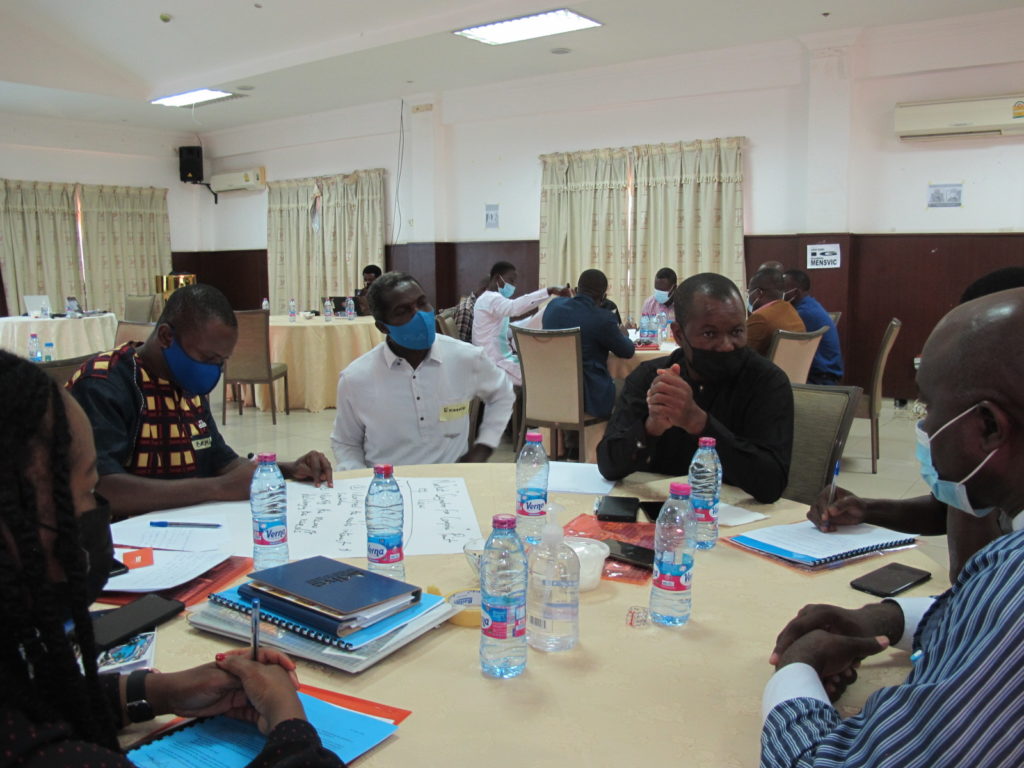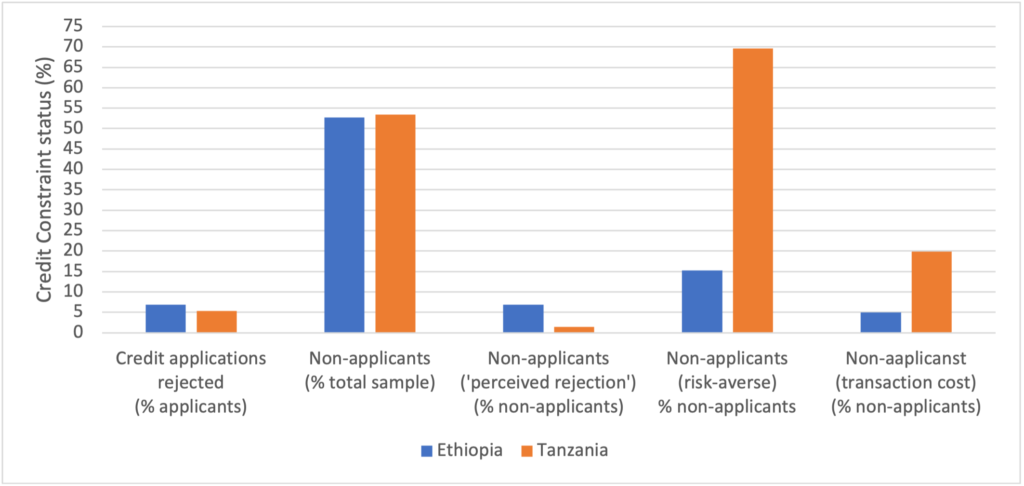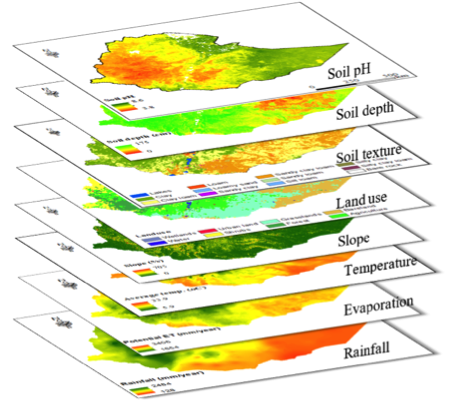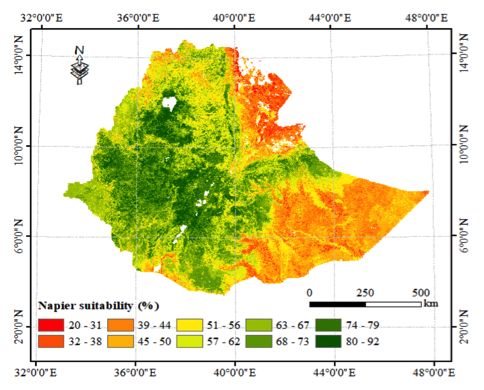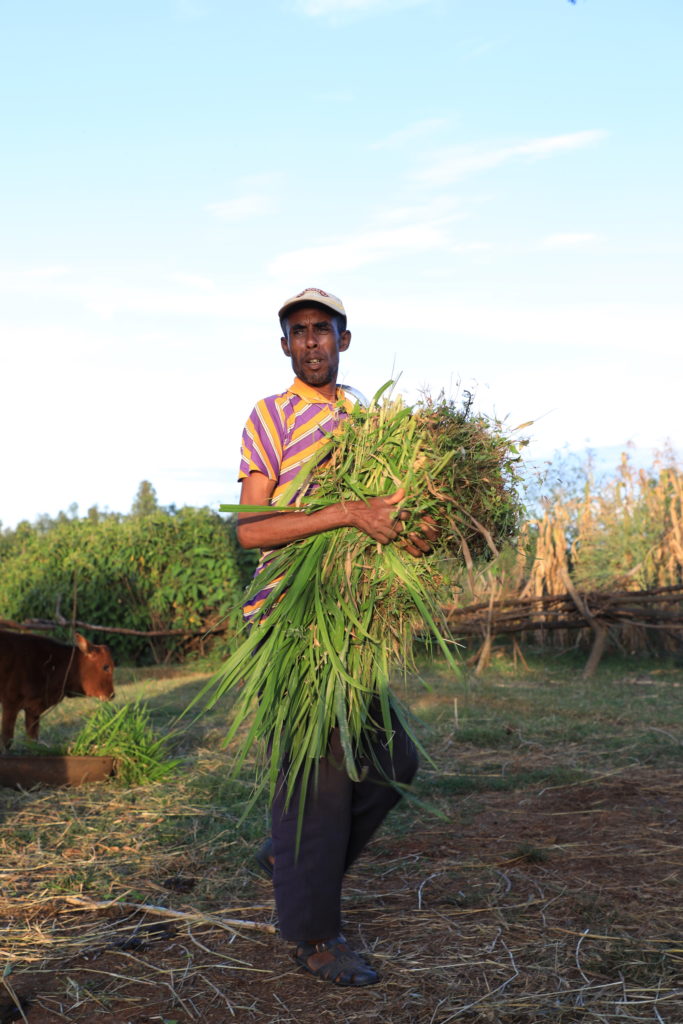Researchers and businesses in Mali join forces to overcome challenges and make solar irrigation pumps available to smallholder farmers. Version Française ci-dessous.
More than two-thirds of the people living in Mali rely on rain-fed farming for food and income. But frequent dry spells and droughts threaten incomes and food security, eroding their livelihoods and increasing the risk of conflict.
Using irrigation technologies to supplement rainfall, both during dry spells and during the long dry season, could help safeguard farmers against weather-related shocks and boost their production. Because the price of solar photovoltaic panels has been rapidly decreasing in recent years, solar-powered pumps are emerging as a climate-smart, affordable irrigation technology suitable for production on over 4.4 million hectares. Malian farmers and the broader population could benefit from the opportunities of solar-powered irrigation, such as economic growth and improved nutrition.
However, the market for solar pumps in Mali is underdeveloped, which inflates prices and reduces access for smallholder and resource-poor farmers. That’s why the Feed the Future Innovation Lab for Small Scale Irrigation (ILSSI) is partnering with two solar energy companies to test and refine new, sustainable business models that can improve farmers’ access to finance and information, strengthen the distribution networks for solar pumps, and ultimately boost small scale irrigation.
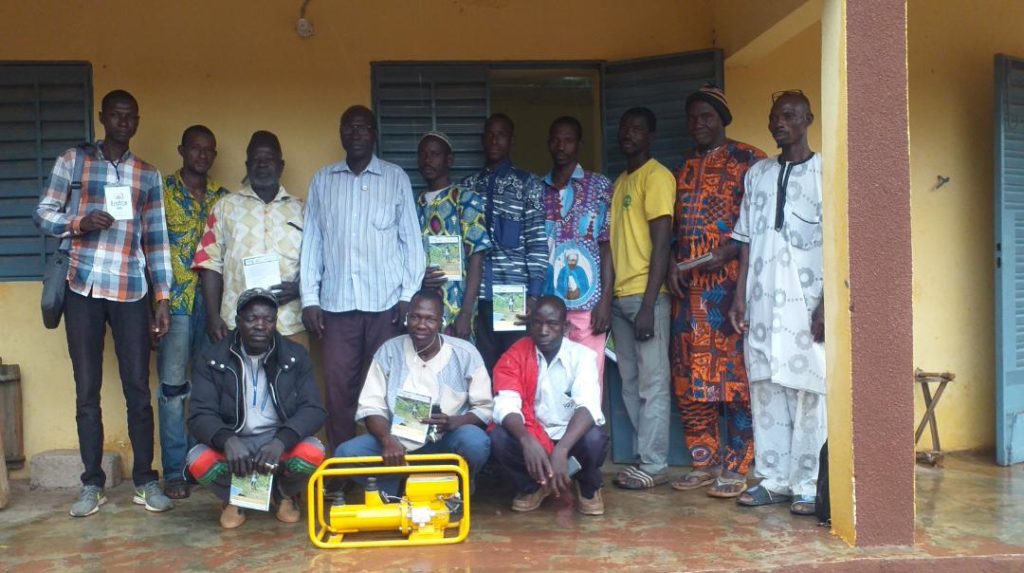
New financing models for inclusive solar irrigation
Following a competitive process, ILSSI has identified EMICOM and EcoTech Mali as two existing businesses with the expertise to develop new business models for solar-powered irrigation. ILSSI aims to help reduce the risks of these and other private sector companies as they invest in new finance products and distribution approaches to reach smallholder farmers, including women.
One central challenge for farmers is the initial cost of investing in solar pumps. Even if farmers are aware that these technologies exist, few of them can afford the up-front investment, explained Konimba Dembele, Manager of EMICOM. But businesses such as EMICOM and EcoTech Mali plan to offer finance products to help farmers manage pump purchases:
“In the coming months or even weeks this risk will be considerably reduced because the financial support of ILSSI has supported us in the establishment of payment facilities (PAYGO) in order to allow small producers, excluded from the traditional banking system, to pay the pump by credit,” said Dembele.
PAYGO is mobile money platform for asset-based finance and part of a sub-distribution model that offers farmers the option to start using a pump, while they make payments for it over time. EcoTech Mali is also developing a PAYGO-based financing option. PAYGO finance has enabled people across sub-Saharan Africa to access off-grid power solutions and is now being rolled out for solar-powered pumps. Both companies expect that the offer will allow more farmers to afford solar irrigation.
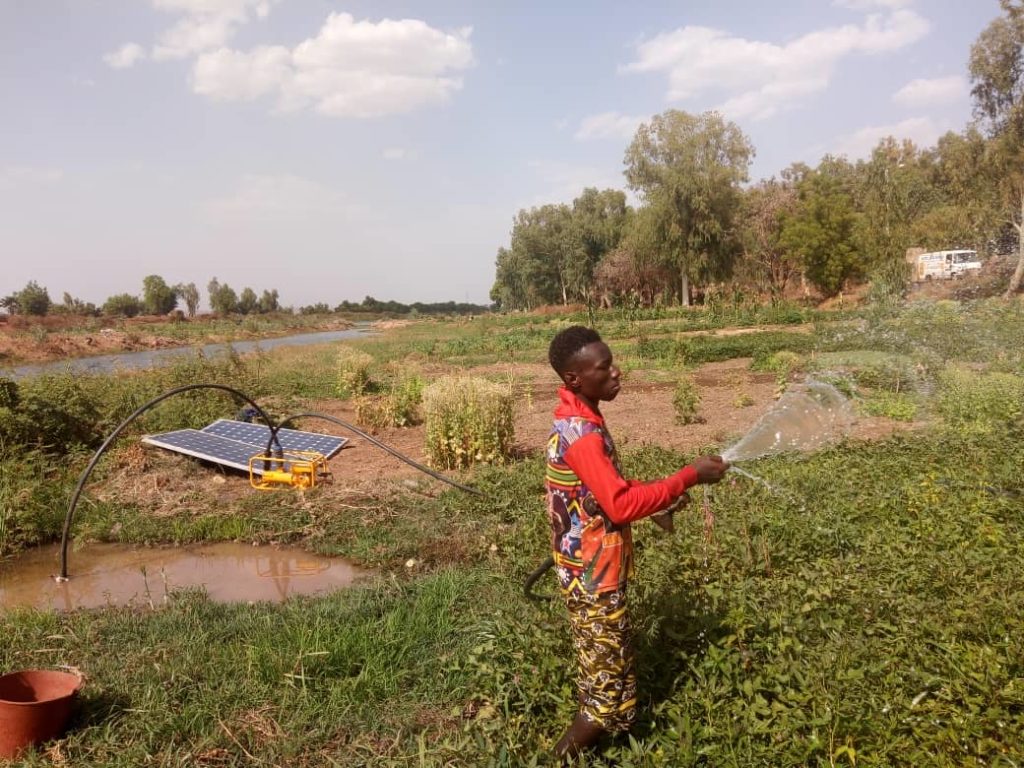
Bringing the market to farmers
Another challenge is related to market reach: Smallholder producers are dispersed throughout Mali, many in remote areas with little infrastructure, and it is therefore difficult to reach farmers with information, to ensure that products are available, and to offer after-sales services.
The EMICOM team is looking to fill that gap by traveling into rural areas in Bamako, Koulikoro, and Sikasso to establish 17 sub-distribution points to raise awareness with farmers:
“Thus, the prospective caravans allow us to both advertise irrigation pumps and to communicate about our innovations in terms of financing and options of payment,” Dembele said.
EcoTech Mali is combining their PAYGO finance model with a village-based agent approach in Sikasso. Men and women local agents will demonstrate and educate farmers about solar pumps. The local agents will also be involved from marketing to finance through to after-sales services. This distribution model builds community-level capacity and offers employment, while expanding off-grid irrigation solutions.

Dembele, of EMICOM, explained the benefits of bringing not only products, but finance, services and learning, to where farmers are:
“This is why the collaboration with ILSSI for the establishment and training of sub-distributors is very important to create this product availability and bring the after-sales service closer to customers, with local technicians learning the basic repair skills. In addition, it allows us to establish dynamic capacity building to increase their skills to be able to repair or even manufacture spare parts in Mali and thus reduce dependence on import of parts.”
A partnership that mitigates business risks
EMICOM and EcoTech Mali are working to bring solar irrigation to farmers, but creating a reliable, stable market for solar pumps and related services across Mali hinges on companies themselves being able to overcome business risks and establish viable ventures.
“When entering the small scale irrigation market, our main risk lies in the adoption of the technology by the farmers. Since we ensure the whole supply chain of the technology—purchase, import, stocking, and distribution—if the famers are not convinced and don’t buy the technology, then we will struggle to sell our stock,” said Olivier Starkenmann, a Founding Partner of EcoTech Mali.
Partnering with ILSSI helps alleviate this risk, he explained:
“Awareness raising is the key to show the benefit of such technologies. ILSSI’s collaboration is crucial since they share the costs of the social marketing efforts that must be done, and they will bring research that shows both the barriers and potential for this market. To ensure wide adoption by farmers, it is also important to add capacity building and complement the awareness with related topics, such as good practices in irrigation, on-field water management, and how to use solar energy.”
From innovation to long-term solution
Strengthening the solar irrigation supply market in Mali and ensuring that farmers can continue to benefit from small scale irrigation will require collaborative efforts in a few areas.
According to Starkenmann, development partners need to support both social marketing and capacity building with farmers, increasing their awareness of and ability to use the solar pumps, for example through projects that directly link with the products provided by local businesses.
Starkenmann added that sharing the financial risks inherent in offering new financing models between different actors—such as micro-finance institutions, development partners, and businesses—could help incentivize others to enter the market.
Another approach to accelerating the expansion of solar irrigation is, according to Dembele, to help farmers increase their profits from irrigated production:
“Supporting producers to organize and bring products to the market will help make solar irrigation equipment profitable and therefore expand.”
Indeed, linking businesses providing solar irrigation pumps with both farmers who are interested in irrigating their crops and with other businesses interested in buying those irrigated crops is emerging as a promising approach to generating a robust, sustainable market system around solar irrigation. To support the development of such linkages, both EcoTech Mali and EMICOM will be invited to join ILSSI multistakeholder dialogues already established in Mali.
Finally, Dembele said, while the private sector can foster new innovations that meet local needs, advocating for public authorities to launch a national program in support of the solar irrigation supply chain would also be a significant step toward ensuring that solar irrigation and its benefits becomes accessible to all.
####
De nouveaux modèles commerciaux apportent l’irrigation solaire aux agriculteurs Maliens
Des chercheurs et des entreprises au Mali unissent leurs forces pour surmonter les défis et mettre des pompes d’irrigation solaires à la disposition des petits agriculteurs.
Plus des deux tiers des habitants du Mali dépendent de l’agriculture pluviale pour leur alimentation et leurs revenus. Mais de fréquentes périodes de sécheresse menacent les revenus et la sécurité alimentaire, érodant leurs moyens de subsistance et augmentant le risque de conflit.
L’utilisation de technologies d’irrigation pour compléter les précipitations, à la fois pendant les périodes de courte and longue saisons sèches, pourrait aider à protéger les agriculteurs contre les chocs climatiques et à augmenter leur production. Etant donné que le prix des panneaux solaires photovoltaïques a rapidement diminué ces dernières années, les pompes à énergie solaire apparaissent comme une technologie d’irrigation adéquate face au climat et abordable, adaptée à la production sur plus de 4,4 millions d’hectares. Les agriculteurs Maliens et la population en général pourraient bénéficier des opportunités de l’irrigation à l’énergie solaire, en termes de croissance économique et de nutrition

Cependant, le marché des pompes solaires au Mali est sous-développé, ce qui gonfle les prix et réduit l’accès pour les petits exploitants et les agriculteurs qui n’ont pas de moyens financiers. C’est pourquoi le Feed the Future Laboratoire d’Innovation d’Irrigation à Petite Echelle Innovation (ILSSI) s’associe à deux sociétés d’énergie solaire pour tester et affiner de nouveaux modèles commerciaux durables qui peuvent améliorer l’accès des agriculteurs au financement et à l’information, renforcer les réseaux de distribution de pompes solaires, et, en fin de compte, stimuler l’irrigation à petite échelle.
Nouveaux modèles de financement pour l’irrigation solaire inclusive
A la suite d’un processus concurrentiel, l’ILSSI a identifié EMICOM et EcoTech Mali comme deux entreprises existantes possédant l’expertise nécessaire pour développer de nouveaux modèles commerciaux pour l’irrigation à l’énergie solaire. L’ILSSI aidera à réduire les risques des entreprises du secteur privé alors qu’elles investissent dans de nouveaux produits financiers et approches de distribution pour joindre les petits agriculteurs, y compris les femmes.
Un défi central pour les agriculteurs est le coût initial d’investissement dans les pompes solaires. Même si les agriculteurs sont conscients de l’existence de ces technologies, peu d’entre eux peuvent aborder l’investissement initial, a expliqué Konimba Dembele, Gérant de l’EMICOM. Mais des entreprises telles que EMICOM et EcoTech Mali proposeront des produits de financement pour aider les agriculteurs à gérer les achats de pompes :
“Dans les prochains mois voire semaines ce risque sera réduit de façon considérable puisque l’appui financier de ILSSI nous a soutenu dans la mise en place de facilités de paiement (PAYGO) afin de permettre aux petits producteurs, exclus du système bancaire classique, de payer la pompe par credit,” a dit Dembele.
PAYGO est une plate-forme d’argent mobile pour le financement basé sur les actifs et fait partie d’un modèle de sous-distribution, qui offre aux agriculteurs l’option d’utiliser la pompe, pendant qu’ils effectuent des paiements au fil du temps. EcoTech Mali est entrain également de développer une option de financement basée sur PAYGO. Le financement PAYGO a permis aux populations de toute l’Afrique subsaharienne d’accéder à des solutions d’alimentation hors réseau et est entrain actuellement d’être déployé pour les pompes à énergie solaire. Les deux sociétés s’attendent à ce que l’offre permette aux agriculteurs de s’offrir l’irrigation solaire.

Apporter le marché aux agriculteurs
Un autre défi est lié à la portée du marché : les petits producteurs sont dispersés dans tout le pays (Mali), beaucoup dans des zones/régions reculées avec peu d’infrastructures, et il est donc difficile d’atteindre les agriculteurs avec des informations, de s’assurer que les produits sont disponibles et d’offrir des services après-vente.
L’équipe EMICOM cherche à combler cette lacune en se rendant dans les zones rurales de Bamako, Koulikoro et Sikasso pour établir 17 points de sous-distribution afin de sensibiliser les agriculteurs :
“Ainsi, les caravanes de prospections nous permettent à la fois de faire connaitre les pompes d’irrigation mais aussi de communiquer nos innovations en matière de financement et de moyen de paiement,” Dembele a dit.
EcoTech Mali combine son modèle de financement PAYGO avec une approche d’agent local (agent basé au village) à Sikasso. Des agents locaux, hommes et femmes, présenteront et informeront les agriculteurs sur les pompes solaires. Les agents locaux seront également impliqués dans le processus du marketing au financement en passant par le service après-vente. Ce modèle de distribution renforce les capacités au niveau communautaire et offre des emplois, tout en développant les solutions d’irrigation hors réseau.

Dembele, de l’EMICOM, a expliqué les avantages d’apporter non seulement des produits, mais aussi de financement, des services et de l’apprentissage, là où se trouvent les agriculteurs :
“C’est pourquoi la collaboration avec ILSSI pour la mise en place et la formation de sous distributeurs est très importante pour créer cette disponibilité du produit et rapprocher le service après-vente aux clients avec l’acquisition des bases techniques de l’irrigation par les techniciens locaux. De plus cela nous permet de créer une dynamique de renforcement des capacités de façon à les faire monter en compétence afin de pouvoir réparer, voire fabriquer des pièces de rechange au Mali et réduire ainsi la dépendance aux importations de pièces.”
Un partenariat qui atténue les risques commerciaux
EMICOM et EcoTech Mali s’efforcent d’apporter l’irrigation solaire aux agriculteurs, mais la création d’un marché fiable et stable pour les pompes solaires et les services connexes à travers le Mali dépend de la capacité des entreprises elles-mêmes à surmonter les risques commerciaux et à créer des entreprises viables.
« En entrant sur le marché de l’irrigation à petite échelle, notre principal risque réside dans l’adoption de la technologie par les agriculteurs. Puisque nous assurons toute la chaîne d’approvisionnement de la technologie – achat, importation, stockage et distribution – si les agriculteurs ne sont pas convaincus et n’achètent pas la technologie, nous aurons du mal à vendre notre stock », a déclaré Olivier Starkenmann, Fondateur Associé de l’EcoTech Mali.
Le partenariat avec l’ILSSI aide à atténuer ce risque, a-t-il expliqué :
« La sensibilisation est la clé pour montrer les avantages de telles technologies. La collaboration de l’ILSSI est cruciale car ils partagent les coûts des efforts de marketing social qui doivent être faits, et ils apporteront des recherches qui montrent à la fois les barrières et le potentiel de ce marché. Pour assurer une large adoption par les agriculteurs, il est également important d’ajouter le renforcement des capacités et de compléter la sensibilisation avec des sujets connexes, tels que les bonnes pratiques en matière d’irrigation, la gestion de l’eau sur le terrain et l’utilisation de l’énergie solaire. »
De l’innovation à la solution à long terme
Le renforcement du marché de l’approvisionnement en irrigation solaire au Mali et la garantie que les agriculteurs peuvent continuer à bénéficier de l’irrigation à petite échelle nécessiteront des efforts de collaboration dans quelques domaines.
Selon Starkenmann, les partenaires de développement doivent soutenir à la fois le marketing social et le renforcement des capacités des agriculteurs, en augmentant leur sensibilisation et leur capacité à utiliser les pompes solaires, par exemple par le biais de projets directement liés aux produits fournis par les entreprises locales.
Starkenmann a ajouté que le partage des risques financiers inhérents à l’offre de nouveaux modèles de financement entre différents acteurs, tels que les institutions de micro-finance, les partenaires de développement et les entreprises, pourrait aider à inciter d’autres à entrer sur le marché.
Une autre approche pour accélérer l’expansion de l’irrigation solaire est, selon Dembele, d’aider les agriculteurs à augmenter leurs bénéfices de la production irriguée :
“Un accompagnement des producteurs dans l’organisation du marché pour la production, la collecte jusqu’à leur écoulement sur le marché contribuera à la rentabilisation des équipements d’irrigation solaire et donc à leur expansion.”
En effet, mettre en relation des entreprises fournissant des pompes d’irrigation solaires avec les agriculteurs intéressés par l’irrigation de leurs cultures et avec d’autres entreprises intéressées par l’achat de ces cultures irriguées apparaît comme une approche prometteuse pour générer un système de marché robuste et durable autour de l’irrigation solaire. Pour soutenir le développement de tels liens, EcoTech Mali et EMICOM seront invités à se joindre aux dialogues multipartites de l’ILSSI déjà établis au Mali.
Enfin, a déclaré Dembele, alors que le secteur privé peut favoriser de nouvelles innovations qui répondent aux besoins locaux, le plaidoyer auprès des autorités publiques pour lancer un programme national à l’appui de la chaîne d’approvisionnement de l’irrigation solaire serait également une étape importante pour garantir que l’irrigation solaire et ses avantages deviennent accessible à tous.


